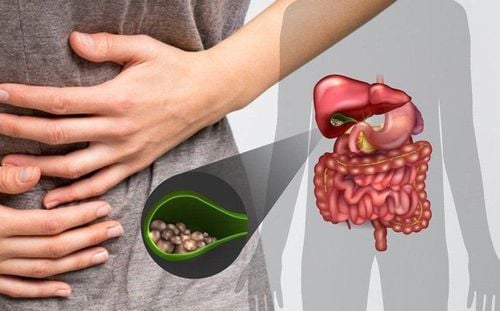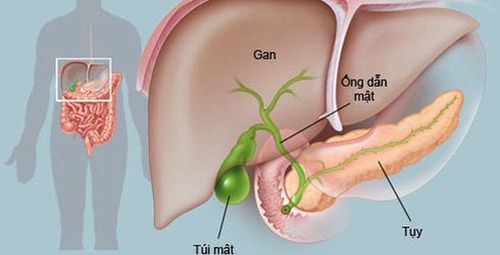This is an automatically translated article.
Cholecystectomy is a commonly used method to treat conditions such as gallbladder stones, gallbladder polyps, or gallbladder cancer. The following article will introduce you to the cholecystectomy procedure in the treatment of cancer.
1. What is cholecystectomy?
Cholecystectomy is a surgical removal of the gallbladder. This is an organ of the digestive system found in the upper right part of the abdomen and just below the liver. Bile is made by the liver and stored in the gallbladder. Then, bile is released through the common bile duct as needed. This type of liquid is used to help digest fats.
Cholecystectomy can be used to treat some cases:
Gallbladder cancer. Gallstones (gallstones in the gallbladder). Cholecystitis . Pancreatitis . Cholecystectomy can be done in a number of different ways, including:
Simple cholecystectomy: The gallbladder and some surrounding tissue are removed. This method is used in cases of early-stage cancer or gallbladder problems that are not cancer. Can be done by open or laparoscopic surgery:
Open cholecystectomy: The gallbladder is removed through a large incision in the abdomen. This is not the preferred method when cancer is known or suspected. Most patients will undergo an extensive cholecystectomy in these cases. Laparoscopic cholecystectomy: Laparoscopic cholecystectomy is performed by making many small incisions that will be made for surgical instruments to be inserted and the gallbladder removed. This method is not used when gallbladder cancer is known or suspected. Radical cholecystectomy: Usually, radical cholecystectomy is performed for patients with gallbladder cancer to reduce the risk of recurrence. This involves removing the gallbladder, part of the liver, and some lymph nodes. In some cases, a more extensive surgery may be needed to remove any of the following: A larger portion of the liver, the entire lobe of the liver (lobectomy), the common bile duct , additional lymph nodes, pancreas, duodenum, and any other areas where the disease is found.
2. Some possible risks of cholecystectomy
With any surgery there are risks and possible side effects such as:
Anesthesia used during surgery to help control the patient's pain response can cause side effects. Side effects include wheezing, rash, swelling, and low blood pressure. Bleeding Surgical site infection. Blood clots. Hernia: This is when tissue in the abdomen pushes through the muscle. It may look like a lump and may be painful or tender to the touch). Pneumonia . Damage to the bile duct, small intestine, or liver.
3. Rehabilitation after gallbladder removal surgery
Recovery from cholecystectomy will depend on the type of procedure the patient had, open or laparoscopic. For patients who have undergone laparoscopic surgery it is important to note:
Take pain relievers as directed by your doctor Follow the instructions you have been given to shower. Your doctor will let you know when it is safe to return to work. Do not use antibiotics or creams on the scar unless directed by your doctor. For patients undergoing open surgery:
Avoid lifting heavy objects until authorized by the doctor Do not take a bath, do not take a hot tub or swim. Use pain relievers as prescribed. Consider placing a pillow over the incision when coughing or sneezing to increase incision support and reduce pain. Follow your doctor's instructions for incision care.
4. Care after cholecystectomy
The patient should seek the help of a family member or friend in daily activities until the body is restored. Make sure to take enough of the medication prescribed by your doctor to prevent pain, infection, or constipation. Discontinue use and contact your doctor immediately if you experience any unusual symptoms. To manage constipation after surgery, patients can change their diet, drink more fluids, and take over-the-counter medications. Talk to your doctor before taking any medication for constipation. Deep breathing and adequate rest can help manage pain, keep your lungs healthy after anesthesia, and promote good lymphatic drainage. Try to perform deep breathing and relaxation exercises several times a day for the first week or when the patient feels stressed by closing the eyes and taking 5-10 deep breaths, relaxing the muscles.
Please dial HOTLINE for more information or register for an appointment HERE. Download MyVinmec app to make appointments faster and to manage your bookings easily.
Reference source: oncolink.org













